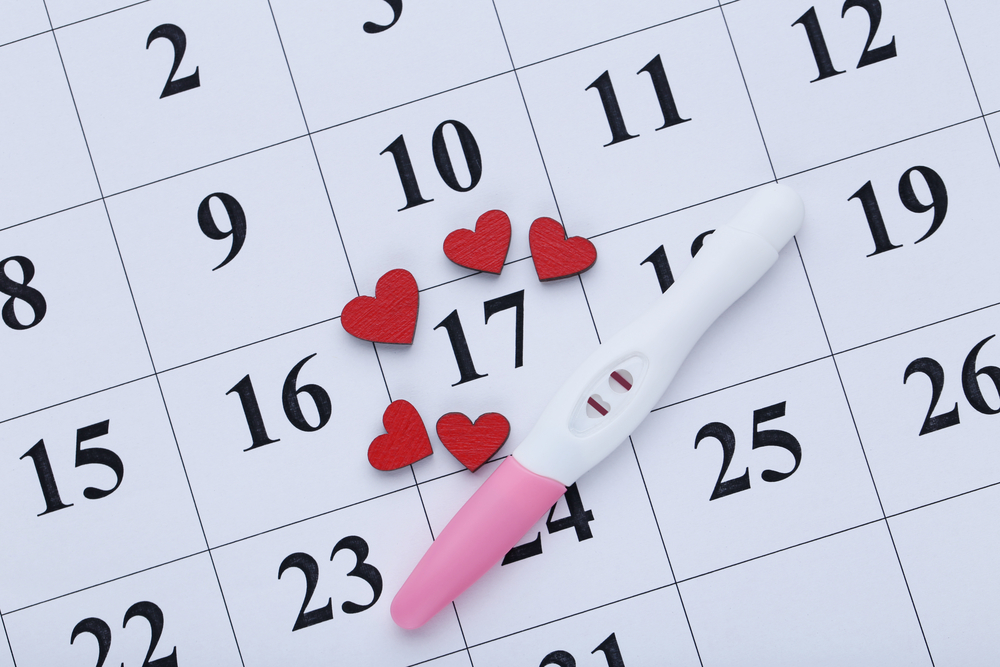After you find out you are pregnant, one of the first exciting things to do is to figure out your due date. You have nine months to anticipate, prepare, and get excited for your new bundle of joy. It can be fun to figure out when that little bundle will come into the world. There are so many apps these days that make finding out your due date almost instantaneous. These apps usually use the first day of your last period to help figure out your due date. Once you go to the doctor though, sometimes your estimated due date gets completely changed by your healthcare provider.
Your healthcare provider has two different ways of figuring out your estimated due date. This is usually only an estimate because rarely people know their exact conception date, unless they used in vitro fertilization or were using a fertility tracker. If you don’t know the exact date your doctor will ask you for the first day of your last period. From there they can add 7 days to that date, then subtract three months. So an example would be period day as April 4th, add 7, April 11, then subtract three months, January 11th, is your estimated due date. This method is based on if you have a menstrual cycle of 28 days. More often than not, most women don’t. A normal menstrual cycle can vary from 21-35 days. Anything outside of that is irregular, which can also be common.
The second way your doctor has to predict your due date is using an ultrasound scan. This is usually the method where your predicted due date gets thrown right out the window. The ultrasound scan measures the size of the fetus. The problem with this is it is measuring the fetus as though all fetuses grow at the same size for the length of the pregnancy. There are variances in growth in two year olds, five year olds, or even 10 year olds. So thinking that all babies in utero grow at the same rate may not be as accurate. Many studies have shown that ultrasounds done between 11-14 weeks are more accurate in estimating due date then ultrasounds done before or after these weeks. The ultrasound scan may also change your due date if it is known that you have irregular cycles.
In some cases your healthcare provider may do an ultrasound scan in your third trimester. This can be done for a number of reasons. Measuring size of the fetus, checking for growth disorders, checking amniotic fluid levels, or placement of the fetus, or placenta. In some cases if your baby is measuring too large, or too small your due date could be changed at this appointment. Your due date could be moved up or even moved back further. The change in the due date is usually based on the size of the baby. If your baby is measuring large, they may be thought to be closer to delivery then if they were average or measuring small. This may not always be the case though, a large baby does not mean a fully developed baby. Moving the due date up too much can actually cause your baby to be preterm which can lead to other complications.
Complications can arise with an incorrect due date. After 40 weeks the placenta will slow down growing, or may stop working altogether. If this happens your baby won’t be receiving any nutrients or oxygen. Infections can develop such as endomyometritis, or chorioamnionitis. Placenta abruption risks are higher. If you go too much past 40 weeks you risk having a large baby, which can lead to a 3rd or 4th degree tear, the need for forceps, or vacuum assistance to deliver the baby. Or in some cases if the baby is too large, it may call for an emergency C-section. The risk of having a stillbirth increases after 3-4 weeks past due.
Going too early can also cause complications. Being born before 37 weeks can lead to cognitive problems, temperature control complications, low birth weight, sensory delays, and breathing problems. It can also cause your child to have to be care for in the NICU for a period of time.
You have a higher risk of going past your due date if you have a family history of long pregnancies. If you have had a previous post term birth you are also at a higher risk. Other risks are a high BMI, more weight gain during pregnancy, older maternal age, if you are pregnant for the first time, or pregnant with a boy. If your baby is measuring small your healthcare provider may push your due date back in hopes your baby grows more before being born. If you had a longer time between ovulation and implantation it may also delay your birth.
Due dates or more of an estimate than an exact science. Most people give birth 2 weeks on either side of their due date. Full term is considered 39 weeks 0 days to 40 weeks 6 days. Anything before this time period is considered preterm. Anything after this time period is considered postterm. Finding your due date can help you be able to plan and anticipate better as well as help your healthcare provider know when you need certain medical tests done during pregnancy. Knowing it is just an estimate can sometimes help you not get so locked in on a certain day in case that day comes and goes and your little baby hasn’t decided to come out into the world yet.
READ MORE: The Importance Of Routine Pregnancy Testing
Sources:
https://www.malmanlaw.com/malman-law-injury-blog/what-are-the-risks-of-incorrect-due-dates-for-pregnant-women/#:~:text=This%20is%20an%20estimate%20based,too%20soon%20or%20too%20late.
https://evidencebasedbirth.com/evidence-on-due-dates/
https://health.osu.edu/health/womens-health/what-can-cause-your-due-date-to-be-wrong
https://www.sarawickham.com/research-updates/whos-most-likely-to-get-an-inaccurate-due-date/









